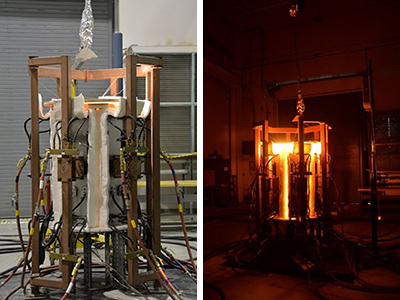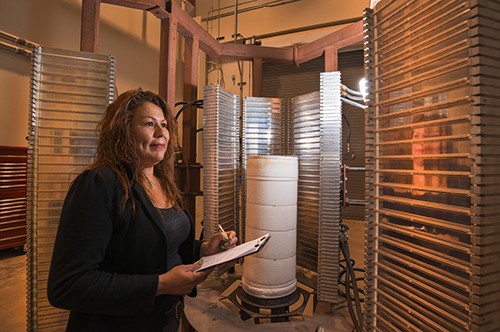A viable alternative to fire testing is the use of radiant heat lamps as a heat source. Such setups are amenable to modeling, and provide an excellent method for developing and validating test item fire response models. Concurrent use of testing and simulation requires careful control of the boundary conditions.
Capabilities
- 5.2 MW electrical capability to Thermal Test Complex (TTC)
- Up to 480 V to heaters
- Typical heaters:
- Tungsten filament/quartz envelope lamps, 6 kW each at 480 V
- Silicon carbide rods (SiC) up to about 1500°C (2730°F), radiating temperature
- Other types of electric resistance heaters
- Other heater types to tailor heating profiles
- Water-cooled lamp panels for lamps; SiC rods don’t require any cooling
- Data acquisition capabilities for thermocouples, pressure gages, etc. Can easily acquire over 100 channels; data acquisition systems regularly calibrated to NIST secondary standard
- Heat flux gage calibration station in TTC

Typical Temperatures and Heat Flux
- Typical maximum temperatures:
- SiC rods can reach up to about 1500-1600°C (2730-2910°F)
- Lamp filaments are as hot as (or hotter than) rods but need to be protected, so we heat a “shroud” with lamps up to about 1300°C (2370°F) maximum, and the shroud radiates to the unit under test
- Typical maximum heat fluxes:
- From 1500°C SiC rods, about 450kW/m2 max
- From 1300°C shroud heated by lamps, 280 kW/m2 max
